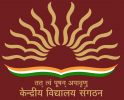photos
KVS FOUNDATION DAY : 15th of December is celebrated as the foundation day of KVS. The Kendriya Vidyalaya Sangathan (lit. “central schools”) is a system of central government schools in India that are instituted under the aegis of the Ministry of Human Resource Development (MHRD). It has a total of 1225 schools in India.(as of July 2019) and three abroad. It is one of world’s largest chains of schools.
History of the KVS
The system came into being in 1963 under the name ‘Central Schools’. Later, the name was changed to Kendriya Vidyalaya. All the schools are affiliated to the Central Board of Secondary Education (CBSE). Its objective is to educate children of the Indian Defence Services personnel who are often posted to remote locations. With the army starting its own Army Public Schools, the service was extended (but not restricted) to all central government employees.
A uniform curriculum is followed by these schools all over India. By providing a common syllabus and system of education, the Kendriya Vidyalayas are intended to ensure that the children of government employees do not face education disadvantages when their parents are transferred from one location to another. The schools have been operational for more than 50 years.
About
Main article: List of Kendriya Vidyalayas

Kendriya Vidyalaya Sangathan Headquarters, Delhi
As of March 2018, there were 1228 schools named Kendriya Vidyalayas. Kendriya Vidyalaya is one of the longest school chain in world with 1225 schools in India and three operated abroad.[2]
A total of 1,315,157 students (as of 6 December 2019) and 45477 employees were on the rolls (as of 6 December 2019). These were divided among 25 regions, each headed by a deputy commissioner.[3]
The three Kendriya Vidyalayas outside India are in Kathmandu, Moscow, and Tehran. They are intended for children of Indian embassy staff and other expatriate employees of the government of India.
One school in Tshimalakha, Bhutan, was transferred to the Bhutanese government, thus ceasing to be a Kendriya Vidyalaya (then known as Indo-Bhutan Central School (IBCS)) in 1989, after one of the major Indo-Bhutan projects (the Chukhha Hydal power project) was near completion. Indian government employees were gradually transferred back to their own country.
All the schools share a common syllabus and offer bilingual instruction, in English and Hindi. They are co-educational.
Sanskrit is taught as a compulsory subject from classes VI to VIII and as an optional subject until class XII. Students in classes VI to VIII could study the German language until November 2014, when the scheme was discontinued. But was again re continued and is available in some schools until class 10. In Moscow, students are given an opportunity to choose French or Russian as their third or second language.
Tuition fees are charged for Kendriya Vidyalaya students have to pay the school development fund (Vidyalaya Vikas Nidhi), with the proceeds spent on the development of that particular school. Students from Scheduled Castes and Scheduled Tribes and children of KVS employees are exempt from tuition fees. Girls who are their parents’ only child from class VI onward are exempt from tuition and school development fund. [4]
All members of parliament could recommend up to six students from their constituency for admission to a Kendriya Vidyalaya. From the academic session 2016-17, the quota has been increased to 10 students.[5]
The Quality Council of India (QCI) has accredited three of KV schools: KV RK Puram, KV IIT Powai and KV Bhinga.[6]





